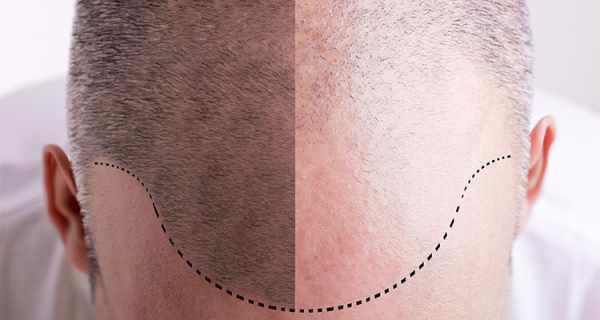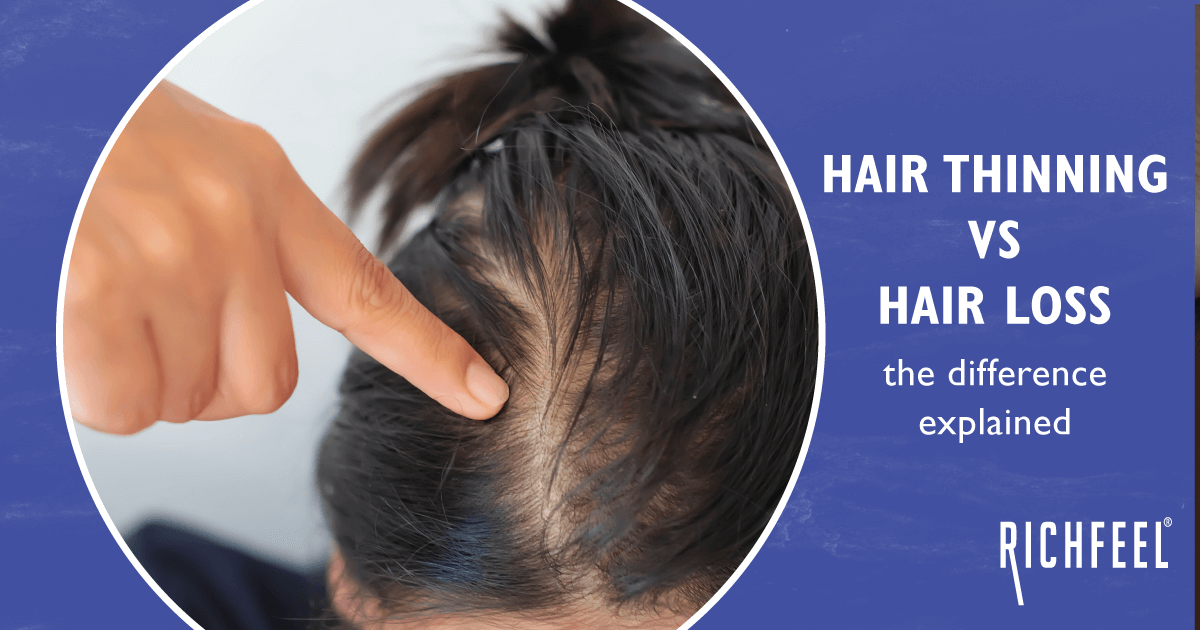“I am homemaker managing a joint household with 10 members! It has been hard to pay much attention to my hair given my hectic schedules. I do ensure I brush and wash regularly! However, I have noticed that my hair has started falling a lot. How do I know if it’s too much or if it’s normal for my age?”
Sheila (35 years, Homemaker)
“My hair has been falling rapidly in the past few months. I am too young to be balding, am I not?”
Karan (23 years, Computer Engineer)
“ I have been noticing a lot of hair fall. I think I’m losing about 100 strands a day. Is this normal or do I need to be worried?”
Ranjitha (28 years, Graphic Designer)
The above are some queries we have received. They are also some of the most frequently asked questions!
Hair loss is a common problem that causes a great deal of anxiety. Our hair enhances our looks, adds to our self-confidence and defines our personality in more ways than one. It influences the way others perceive us and can thus boost or dampen our self-esteem. So, when we see that our hair seems to be falling noticeably, we get worried.
And it’s not just about the external appeal. Hair is an important part of who we are even anatomically. If you have any doubts about that, think about this – the average person has five million hairs on his or her body, 100,000 to 1,50,000 of which are on the scalp. Now that seems like a big number, doesn’t it? But this number doesn’t matter when you see strands on your comb or in the shower. True?
If you notice that your hair is falling more than ever…that a bunch of strands comes off in your hand every morning when you comb…that your shower area is full of loose hair, you might want to blame it on the fact that you were born in the 21st century.
The hair on your head is actually amazingly strong. A single hair strand can support a hen’s egg. A thousand hairs would be enough to suspend a heavy man. Now let’s clarify that, here, we are referring to normal hair, ideally in its healthy state. However, despite this innate tenacity, our hair finds it hard to stand up to the wear and tear of modern 21st-century life!
Today, on our ‘Ask the Hair Expert’ series, we are going to discuss your hair’s strength, hair loss – what’s normal and what isn’t, how to spot symptoms of concerns and how to stay clear of such hair woes.
You asked: “Is it normal to lose hair every day? How much hair loss is normal? How do I know if I am losing more hair than I should? How much hair fall is too much?!”
Here’s the answer from the Hair Experts.
There is no exact number by which you can determine if your hair loss is normal or excessive!
A trip to your Trichologist’s clinic can help you figure your magic number!
But wait…this isn’t the full answer to your queries. Read on…
Some interesting Hair facts…
Hair is, to a great extent, protein. It grows about 1 centimeter a month which, compared to other tissues of the body, is very fast. Scalp hair has a life of about 4 years and grows within indentations in the skin known as hair follicles. There are about 120,000 follicles on the scalp.
The production center for the hair is the hair bulb where cells are constantly dividing and, hence pushing the cells above in an upward direction. It is thus that the hair grows!
Below the hair bulb, is the papilla which serves as the communication link between the hair and the rest of the body. The body’s blood supply circulates through the papilla and provides the nourishment necessary to keep your hair growing.
Blood is the means by which so many things are transported through the body – foods, waste products, drugs, poisons and hormones, to name but a few. Now, because the blood transports these things to and from the hair papilla, the hair itself is influenced by all these factors. Indeed, the hair is so sensitive – due to its high rate of growth – that hair loss may be the first sign that something internal is wrong with you. It is hence we often refer to our hair as our body’s barometer – it can indicate good health or the lack of it!
A hair, then, can provide clues for the diagnosis of certain internal bodily problems. It gives clues on whether the hair loss that you may be facing is normal or excessive! The manner in which hair is lost can also give important clues as to the cause of the loss:
- From all over the scalp or from specific areas?
- From one spot or many?
- With or without sharply defined margins?
- With or without the hair follicles being destroyed?
- Quickly or slowly?
All these factors provide important information as to why the loss is occurring, is it normal or excessive, how long it will last, whether it is temporary or permanent, reversible or irreversible and what should be done about it!
These factors, and how to decipher them, are not always clear to the layman. It is scientific and needs a trained professional to read through. It takes a Trichologist to diagnose one’s hair condition.
Now that we have discussed the basics, let’s move on to discuss hair loss – what’s normal and what’s excessive.
What is considered normal hair loss?
Our hair goes through a natural life cycle of growth and fall. Do read our blog on hair growth cycle and hair anatomy to understand this better.
When you have a full head of hair, each scalp hair grows for about 4 years. This growing period (anagen) is followed by a short transitional phase and then a resting period (telogen) of about 2 or 3 months, after which the hair is shed from the scalp. A new hair takes its place within the same follicle.
It is important to understand here that not all hair strands are going through the same phase at the same time. No, they are not all synchronized to grow and fall together! Imagine if it all happened at the same time! If this was the case, you would temporarily lose all your hair at one time – as is observed with some animals.
Now with us, our hairs grow and fall in a random fashion. It is hence that you do not notice when which hair is in which phase of its life cycle! Your normal daily loss of hair thus goes unnoticed.
The rate of growth, compared to the rate of fall, or one’s Anagen/Telogen (A/T) ratio is what helps determine if your hair loss is normal or excessive. The A/T Ratio is your clue here!
The normal percentage of hair in the falling stage is 20% and anything over this is abnormal and requires treatment. The ideal A/T Ratio is 80:20.
How do you measure your A/T Ratio? Visit your Trichologist!
So, if you notice hair in your brush, on your pillow, or on the bathroom floor, you don’t need to necessarily worry. You are just shedding hair that is in the Telogen phase of its life cycle. This is normal.
Sometimes, however, as in the above queries indicate, our hair begins to fall at an unprecedented rate, and then we do have cause for worry. When the hair loss experience is prolonged (more than 3 months) and your A/T ratio is skewed beyond the 80:20 ratio, then it’s time for some tricho action.
What is excessive hair loss?
Excessive hair loss simply means more hair than you normally lose. For some people, the daily loss is about 50 hairs whereas, for others, the daily loss maybe about 100. Let us remind you that the A/T ratio varies from person to person.
Trichologists can accurately calculate your rate of loss of hair by examining microscopically several hairs that have been epilated from the scalp. The percentage of hairs in the resting (telogen) phase of the hair cycle is normally about 15%. Therefore, a percentage of 20% or more would strongly suggest excessive hair loss.
Usually, you lose a few more hairs when you shampoo – due to the agitation of the hairs by your fingers – and fewer hairs during the time following the shampoo. The hairs you lose during shampooing or combing etc are in the resting stage. In other words, they are ready to fall out. Therefore, whether you shampoo daily or once – a – week, your total weekly loss will be exactly the same.
Now, if you have been detected with excessive hair loss, it is imperative to find the root cause and address it with professional help.
HAIR IS A THERMOMETER OF HEALTH
Any kind of excessive hair loss stems from an internal imbalance. It is the body signaling that something is not as it should be! Recall the discussion at the beginning of this page!
The most common forms of hair loss are Diffuse Hair Loss and Telogen Effluvium where there is excessive hair loss from the entire scalp and not in any specific pattern such as with FPT or MPT.
Such hair loss is triggered as a reaction to a disturbance within the body. The disturbance may have been a temporary one to which the body quickly adjusts or it may be a more serious one which the body has quickly come to terms with. Whichever is the case, diffuse hair loss is an important sign that your body recently went out of balance and may still be out of balance.
The good news is that, with diffuse hair loss, the lost hair is always replaced and the excessive loss will either correct itself or will slow to normal once the underlying cause has been pinpointed and corrected.
Now there is a trick to spotting this. It’s what we call THE MAGIC 3 MONTHS
With diffuse hair loss, the cause of the loss occurs about 2 or 3 months BEFORE the actual hair loss. This is because an internal imbalance, such as a high fever or anemia, causes many of the growing hairs to pass prematurely to the resting ‘telogen’ phase. The hair remains in this phase for about 2 or 3 months and THEN falls out. We then start to worry, three months after the actual cause has occurred!
A case in point is that of a patient who suffered excessive hair loss 3 months after experiencing a bad bout of food poisoning. The hair loss occurred 3 months after the food poisoning and the patient did not connect the two events at all! Until she met with us…
Diffuse hair loss can be divided into two areas depending upon whether the problem will correct itself.
Temporary self-correcting diffuse hair loss is caused by such events as food poisoning, whereas permanent diffuse hair loss is associated with medical or nutritional imbalances that must be treated before the hair loss recovers.
Temporary self-correcting hair loss will begin 2 or 3 months after the event causing the Hair Loss and no treatment can really quite stop the Hair loss. It will start after 2-3 months and return to its normal state after 6 months. You will simply need to care for it as always, with a balanced diet and a disciplined hair care regimen.
Permanent diffuse hair loss will not correct unless the causative factor is corrected. This needs a clear diagnosis and appropriate treatment – both for the causative factor and your hair individually, yet cohesively.
As regards Telogen Effluvium, it is an extremely common form of temporary hair loss in women, characterised by thinning and shedding of hair from the scalp.
It appears as a diffuse hair loss mainly after the body has undergone severe stress and is often a temporary hair problem. The hair loss that happens when the hair is in the Telogen phase for a prolonged duration is what is referred to as Telogen Effluvium.
Remember, what causes diffuse hair loss or telogen effluvium in one person may not cause it in another person. You will need to consult your Trichologist for an expert opinion.
What should you then watch out for?
- Having understood the above content, if you have been experiencing what you feel is excessive hair loss, you should think back and check if any of these apply to you!
- 3 or 4 months after an illness or a major surgery, you may suddenly lose a large amount of hair. This hair loss is related to the stress of the illness and is temporary.
- Hormonal problems may cause hair loss. If your thyroid gland is overactive or underactive, your hair may fall out. This hair loss usually can be helped by treatment of the thyroid disease.
- Hair loss may occur if male or female hormones, known as androgens and estrogens, are out of balance. Correcting the hormone imbalance may stop your hair loss.
- Many women notice hair loss about 3 months after they’ve had a baby, postpartum, or if they’re going through menopause.
- Some medicines can cause hair loss – birth control pills and antidepressants, medicines used in chemotherapy to treat cancer, blood thinners (also called anticoagulants), medicines used for gout, Vitamin A (if too much is taken),
- Finally, hair loss may occur as part of a nutritional deficiency, or an underlying disease, such as diabetes. Since hair loss may be an early sign, it is important to find the cause to get it treated in a timely manner.
How can a Trichologist help?
If you have been facing hair loss for more than months and you are not able to spot a cause three months prior to when it all started, it’s best you meet a Trichologist.
A Trichologist can identify the cause through clinical diagnosis. Even if we are to discuss just diffuse hair loss, there are various types of it that you will not be able to decipher. There are various other concerns related to PCOD, postpartum hair loss, thyroid disorder-related hair loss/thinning, premature greying, androgenic alopecia, hair loss triggered by and as a side effect to taking anti-depressant medications etc. that you may be facing and not quite felt the gravity of.
Trichologist can help clearly diagnose your condition during your consultation, with a detailed analysis of your hair & scalp, your daily routine, diet, along with a discussion of your medical case history. The course of treatment may involve a topical treatment, hair fall treatments, rejuvenating therapies, changes to diet or routine habits, or other specific tricho treatments, depending on your hair’s need. One solution doesn’t always fit all! What you need is a personalised prescription.
Do visit a reputed clinic to meet a trichologist. Get professional guidance on all things hair.
Questions? We are just a call away!
Interested to learn more? Do follow our blogs on hair loss, treatments & solutions, and other interesting hair trivia!
Connect with us on social media on the links below. Please leave your questions & comments, and we will address them all, just as we have done today!



